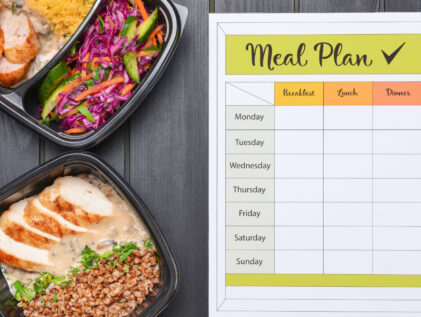In today’s fast-paced world, where long work hours, constant digital distractions, and endless commitments have become the norm, it’s no wonder many of us feel perpetually drained. While caffeine and quick snacks may seem like the go-to solutions, sustainable energy truly begins with how we nourish our bodies. Eating for energy isn't just about what you eat—it’s also about when and how you eat. Let’s debunk common misconceptions and explore how to fuel your body for peak performance and vitality.
Misconceptions About Eating for Energy
- Myth: You Need to Eat Every Two Hours
Many believe that eating small meals every two hours is the key to maintaining energy levels. While this approach works for some, it’s not universally applicable. The key lies in balancing your blood sugar levels, which can be achieved through meals rich in complex carbohydrates, proteins, and healthy fats, rather than frequent snacking. - Myth: Carbs Are the Enemy
Carbohydrates often get a bad reputation, but they are your body’s primary source of energy. The problem arises with refined carbs, like sugary snacks and white bread, which cause energy crashes. Instead, focus on whole grains, legumes, fruits, and vegetables for sustained energy. - Myth: Fat Slows You Down
Healthy fats, such as those found in avocados, nuts, seeds, and olive oil, are essential for brain function and long-lasting energy. It’s the trans fats and excessive saturated fats that should be avoided.
Modern Living and Its Impact on Eating Habits
Our current lifestyle has significantly altered the way we approach food:
Irregular Meal Times: Skipping meals or eating at odd hours due to work commitments can wreak havoc on your metabolism.
Overreliance on Processed Foods: Convenience foods are often loaded with sugar, sodium, and unhealthy fats, providing temporary energy at the cost of long-term health.
Mindless Eating: Eating in front of screens leads to overconsumption and poor digestion.
To combat these issues, intentional eating practices are vital. This means planning your meals, listening to your body’s hunger cues, and prioritizing nutrient-dense foods.
Energy-Boosting Foods to Incorporate
- Complex Carbohydrates
Examples: Oats, quinoa, sweet potatoes, whole-grain bread.
Benefits: Provide slow-releasing energy, keeping you fuller for longer.
- Proteins
Examples: Eggs, lean meats, fish, legumes, tofu.
Benefits: Help repair tissues and sustain energy levels.
- Healthy Fats
Examples: Avocados, nuts, seeds, olive oil, fatty fish.
Benefits: Support brain health and provide a steady energy supply.
- Hydrating Foods
Examples: Cucumbers, watermelon, oranges.
Benefits: Dehydration can lead to fatigue; these foods help maintain fluid balance.
- Energy-Boosting Snacks
Examples: A handful of mixed nuts, Greek yogurt with berries, or hummus with veggie sticks.
Benefits: These options curb hunger without causing energy crashes.
Eating Right in the Current Lifestyle
- Plan Your Meals
Meal prepping ensures you always have healthy options on hand, reducing the temptation of fast food. - Adopt a Balanced Plate Approach
Divide your plate into:
- Half: Vegetables and fruits.
- One-quarter: Lean protein.
- One-quarter: Whole grains.
- Stay Hydrated
Often, fatigue is a sign of dehydration. Aim for at least 8 glasses of water daily, and adjust based on your activity level. - Mindful Eating
Take time to enjoy your meals without distractions. Chewing slowly aids digestion and helps you recognize when you’re full. - Listen to Your Body
Pay attention to how foods make you feel. Some people thrive on three square meals a day, while others need smaller, more frequent meals.
A Sample Meal Plan for Sustained Energy
- Breakfast: Oatmeal topped with nuts, seeds, and fresh berries.
- Mid-Morning Snack: A banana with a spoonful of almond butter.
- Lunch: Grilled chicken or tofu, quinoa, and a large mixed salad with olive oil dressing.
- Afternoon Snack: Greek yogurt with a drizzle of honey and chia seeds.
- Dinner: Baked salmon, sweet potato, and steamed broccoli.
- Evening Snack (if needed): A handful of walnuts or a piece of dark chocolate.
Conclusion
Eating for energy is about creating a sustainable relationship with food that fuels both your body and mind. By focusing on nutrient-dense foods, timing your meals wisely, and adopting mindful eating habits, you can overcome modern-day energy drains and thrive in your personal and professional life. Remember, optimal nutrition is not about perfection but about consistency and balance.
Start small, make intentional choices, and feel the difference in your energy levels every day. Your body will thank you!

